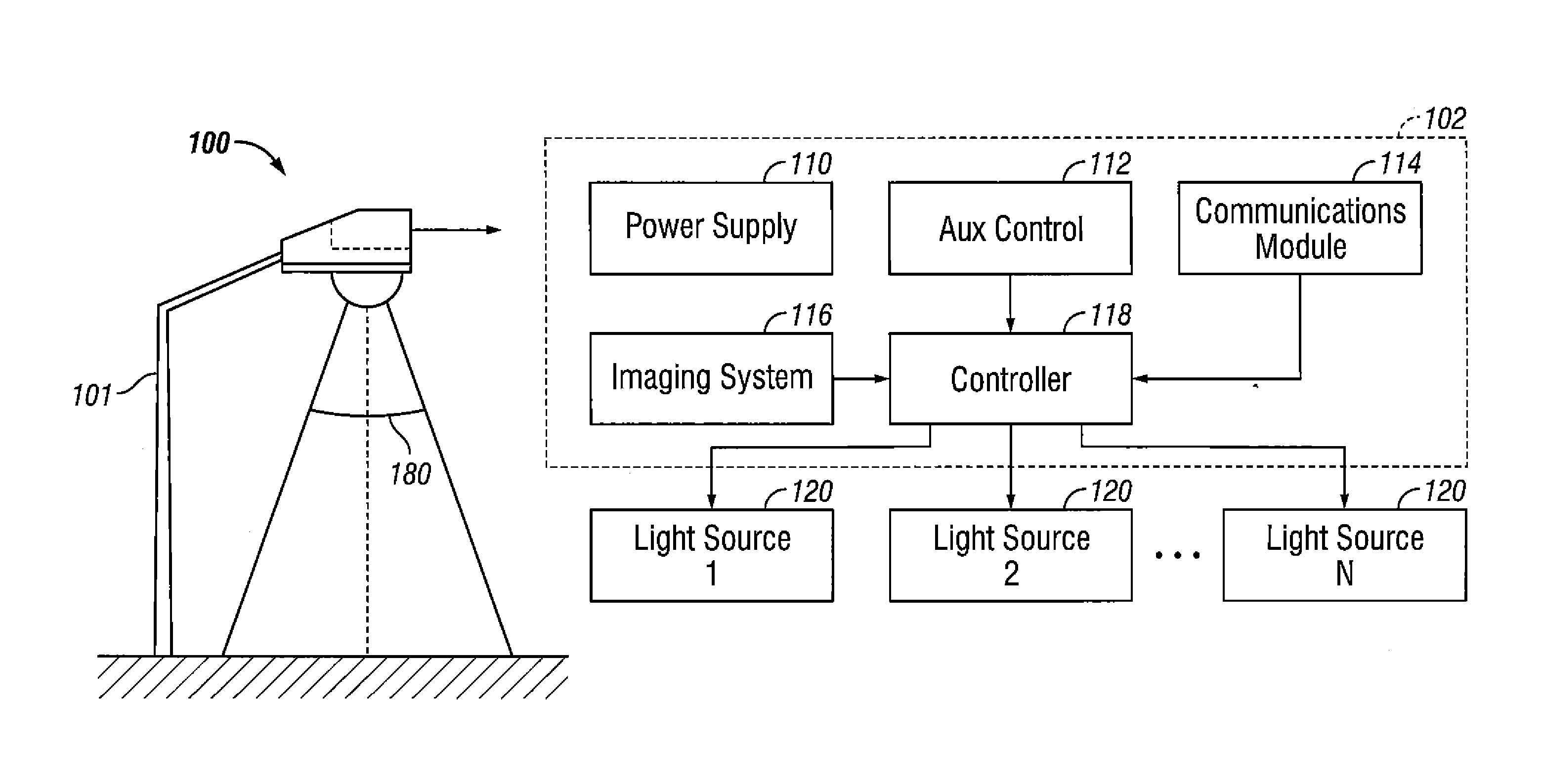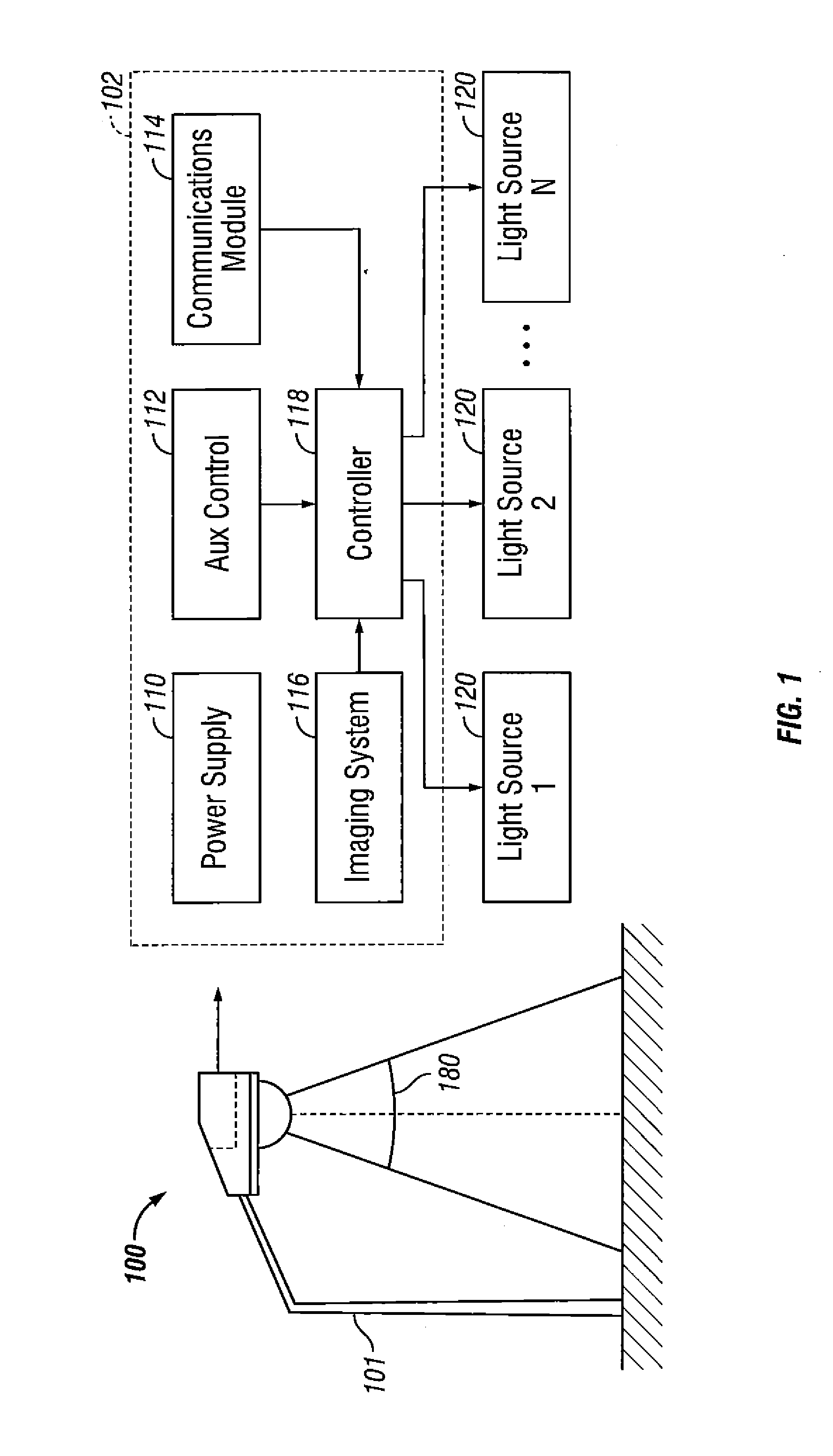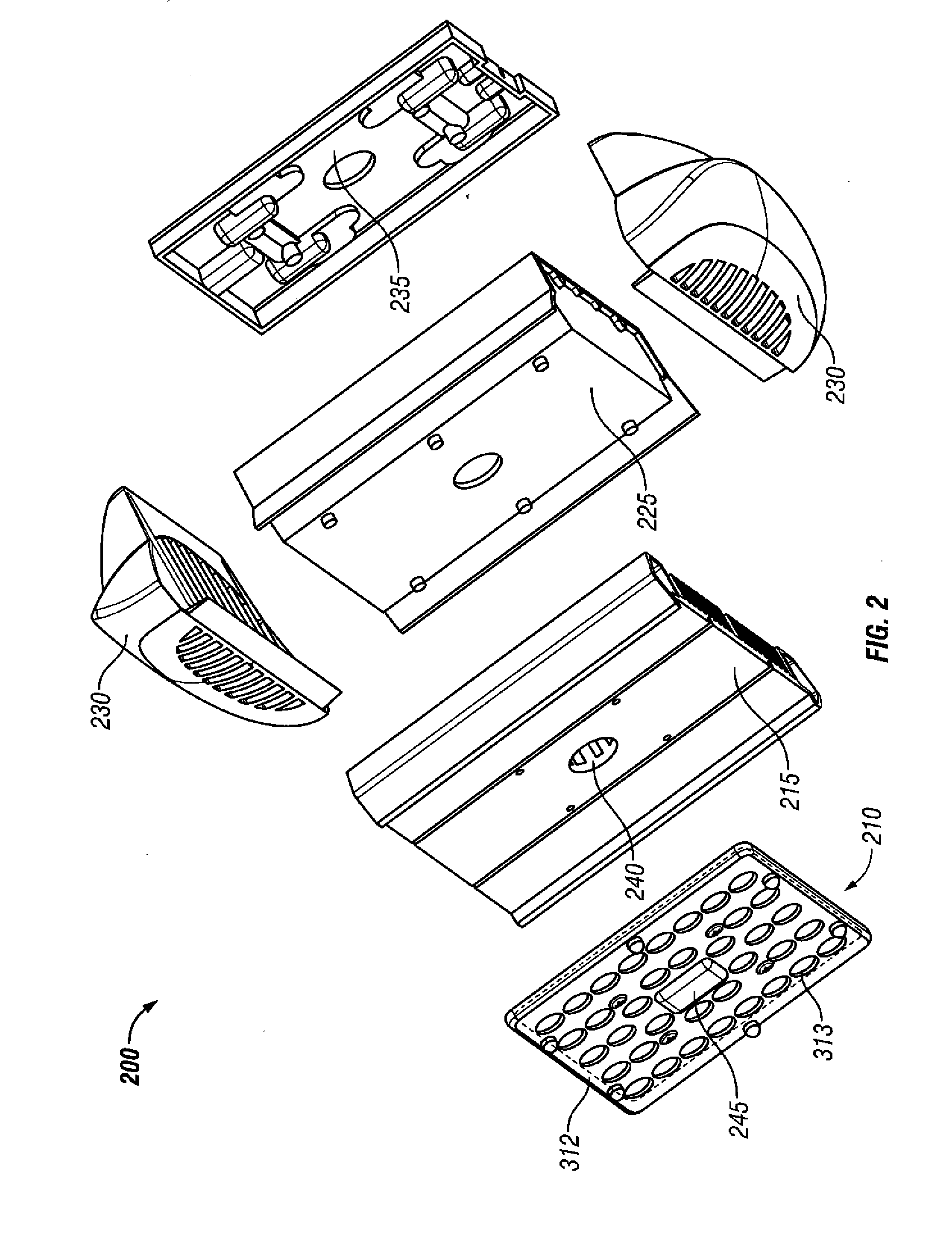Sustainable Outdoor Lighting System for Use in Environmentally Photo-Sensitive Area
a sustainable and photosensitive technology, applied in sustainable buildings, energy-saving lighting, instruments, etc., can solve problems such as color rendering compromise, achieve optimal color rendering, minimize spectral pollution, and minimize spectral pollution
- Summary
- Abstract
- Description
- Claims
- Application Information
AI Technical Summary
Benefits of technology
Problems solved by technology
Method used
Image
Examples
example 1
[0035]In one example, there is provided a method of providing outdoor lighting while minimizing spectral pollution, comprising: 1) providing a first light source and a second light source; 2) electrically coupling the first light source and the second light source to a control system, wherein the control system is integrated with an imaging system; 3) programming the control system to illuminate the first light source in a standby operational mode; and 4) programming the control system to illuminate both the first light source and the second light source when the imaging system detects a target within an illumination area. In such example, the first light source is a monochromatic light source producing light with a peak wavelength of about 580 nm or above. The second light source is a polychromatic LED light source producing a green-tint white light. Illumination of both the first light source and the second light source produces a white light with a color rendering index of about ...
example 2
[0039]In another example, there is provided an outdoor lighting system, comprising: 1) a first light source that produces monochromatic light with a peak wavelength of about 580 nm or above; 2) a second light source, wherein the second light source is a polychromatic LED light source producing a green-tint white light, and wherein illumination of both the first light source and the second light source produces a white light with a color rendering index of about 75 or above; 3) a control system electrically coupled to the first light source and the second light source; and 4) an imaging system integrated with the control system and providing an input to the control system. The control system is programmed to illuminate the first light source in a standby operational mode, and illuminate both the first light source and the second light source when the imaging system detects a target within an illumination area.
[0040]The imaging system may include a processor having image-recognition l...
example 3
[0043]In third example, there is provided a method of providing environmentally sensitive outdoor lighting, comprising: 1) providing a first light source and a second light source on an outdoor fixture, wherein the first light source is a monochromatic light source producing light with a peak wavelength between about 580 nm and about 615 nm, and wherein the second light source is a polychromatic LED light source producing a green-tint white light; 2) electrically coupling the first light source and the second light source to a control system, wherein the control system is integrated with an imaging system, wherein the imaging system comprises a processor having image-recognition logic to differentiate between a target (e.g., human or vehicle) and another non-target moving object; 3) programming the control system to illuminate the first light source in a standby operational mode; and 4) programming the control system to illuminate both the first light source and the second light sou...
PUM
 Login to View More
Login to View More Abstract
Description
Claims
Application Information
 Login to View More
Login to View More - R&D
- Intellectual Property
- Life Sciences
- Materials
- Tech Scout
- Unparalleled Data Quality
- Higher Quality Content
- 60% Fewer Hallucinations
Browse by: Latest US Patents, China's latest patents, Technical Efficacy Thesaurus, Application Domain, Technology Topic, Popular Technical Reports.
© 2025 PatSnap. All rights reserved.Legal|Privacy policy|Modern Slavery Act Transparency Statement|Sitemap|About US| Contact US: help@patsnap.com



